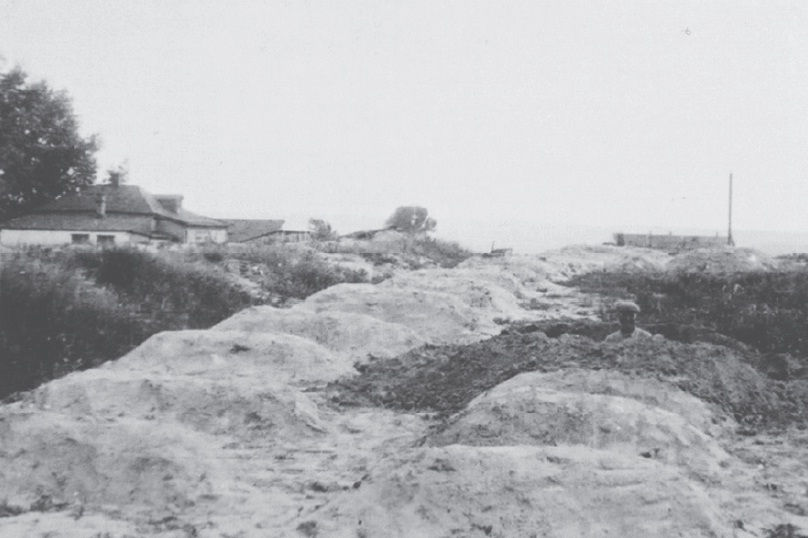Report from Balitsky to the OGPU on the mass exodus of villagers from Ukraine 4
January 22, 1933
The mass exodus of peasants from villages primarily in Kharkiv, Odesa, Kyiv and from parts of Chernihiv oblasts that began in late December, 1932, can be broken down as follows:
Kharkiv oblast:
Incidents of flight have been registered in 19 raions and 39 villages. A total of 20,129 people have fled. Among them: 7,423 collective farmers, 12,698 private farmers and eight Party activists. Odesa oblast: Incidents of flight have been registered in 19 raions, 177 villages and 228 collective farms. A total of 3,447 individuals and 2,642 families have fled. Among them: 1,683 individual collective farmers, 1,259 collective farmer families, 1,320 individual private farmers, 1,007 private farmer families, 438 individual kulaks, 377 kulak families and six Party activists. Kyiv oblast: Incidents of flight have been registered in 27 raions and 437 villages. A total of 6,576 people have fled. Among them: 1,287 collective farmers, 3,936 private farmers, 1,244 kulaks and 109 Party activists.
Chernihiv oblast:
Incidents of flight have been registered in nine raions and 68 villages. A total of 1,541 individuals and 146 families have fled. Among them: 146 individual collective farmers, three collective farmer families, 1,246 private farmers, 124 private farmer families, 141 individual kulaks, 19 kulak families, and five Party activists. All told, incidents of flight in these oblasts have been registered in 74 raions, 721 villages, and 228 collective farms. A total of 31,693 individuals and 2,789 families have left. Among them: 10,539 individual collective farmers and 1,262 collective farm families, 19,203 individual private farmers and 1,131 private farm families, 1,823 individual kulaks and 396 kulak families and 126 Party activists. In most cases, the incidents of flight can be attributed to the search for work. The fact that malicious non-deliverers of grain prevail among those fleeing is evidence that this exodus is from the countryside. Some of those fleeing from their villages take their families along, boarding up their houses and hiding their grain reserves with neighbors and relatives. Some of those fleeing from the villages have buried their grain in the ground. In some villages, those fleeing are primarily the heads of families. Most of those fleeing their villages are headed to Donbas and large industrial centers. The exodus of collective farmers is occurring on a much lower scale than the flight of private farmers. There are also incidents of village council and collective farm chairmen, including “communists,” leaving their villages without permission. “Communists” are fleeing from their villages because they are afraid of facing repressions for the sabotage of grain procurement and failure to perform the tasks set by the Party. Inspections of the Lozova and Sumy railway junctions in Kharkiv oblast, where flight from villages is particularly large in scale, showed high ticket sales for long-distance trains in January this year: 16,500 tickets were sold at Lozova station and 15,000 at Sumy station in January. The growth of ticket sales has also been observed at the Pomoshchna station,
Odesa oblast:
In November, 879 tickets for long-distance trains were sold, 3,614 in December and 1,617 in the first half of January. No rapid spikes of long-distance train ticket sales have been observed at other railway junctions. In early January, in order to stop the flight from villages in a resolute manner, Ukraine’s GPU began arresting the organizers and instigators of the exodus and stepped up intelligence and information-gathering efforts in places where mass exodus had occurred. More than 500 malicious instigators of exodus have been arrested. Ukraine’s GPU has been reporting to the CC CP(b)U and OGPU’s SPO [secret political division] on the mass exodus since December 25, 1932. I am issuing additional orders as per your instructions.
[Excerpt From Holodomor in Ukraine, The Genocidal Famine 1932-33: Teaching Materials for Teachers and Students – By Valentina Kuryliw]
- Balitsky
APRF, fond 3, list 30, file 189, sheets 7-10;
Top Secret: From Lubianka to Stalin on the state of the country in 4 volumes (Moscow, 2001,
Volume 4) “Sovershenno sekretno”. Lubianka – Stalinu o polozhenii v strane: v 4 t. pp.393-394.
Ruslan Pyrih, ed, pp. 83-85
